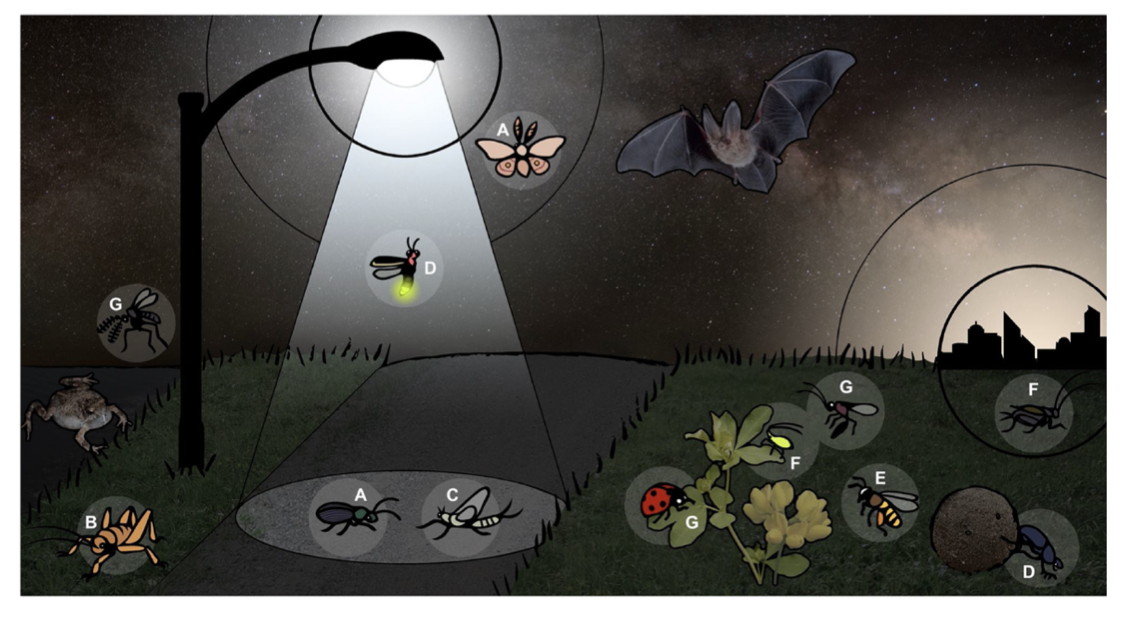Artificial light at night: its effects on wildlife (and us)
Infographic from Owens et al. 2020.
Thinking of adding lights to your garden, to the outside of your house or driveway? Then read on to find out the effects on wildlife of artificial lights at night.
With an increasingly urban landscape, natural ecosystems are being put under immense pressure and the world is losing an unprecedented amount of biodiversity. One of these pressures is artificial light at night coming from direct and skyglow from street lights, car lights, shop lights, advertising, house lights and garden lights among others.
All living things, including animals, plants, and microbes, have evolved under a natural rhythm of night and day, the lunar cycle and the annual cycle of the seasons and this has remained constant until very recently. As the world has rapidly become urban and light pollution extends into rural and offshore areas, the distinction between night and day has become blurred. At the same time, deforestation and habitat fragmentation have reduced the availability of dark refuges for all species. Interestingly around 30% of all vertebrates and 60% of all invertebrates world-wide are nocturnal (Holker et al., 2010). So it is no surprise that all species, especially insects, are being so negatively impacted.
Artificial light at night effects normal foraging, migration, reproduction (thought a change in behaviour as well as affecting reproductive hormones), predation and development.
For example, artificial light at night masks natural light cues for migration of birds causing them to become mislead off course or in the worse situations where light beams are intense, trapped in the light beam, flying in circles until they become exhausted and die. Similarly hatching turtles use the reflection of light from the moon on the sea to move towards the water. Where the sea is near coastal cities, hatchlings are increasingly observed to move inland away from water.
Species that are vulnerable to predation on naturally bright nights (ie, full moon) are found to hide and not forage or seek mates where there is artificial light at night. In contrast, insects including moths, are attracted to artificial light sources and often die before morning through exhaustion or predation.
With artificial light at night driven declines in biodiversity, it is only right that we carefully consider how we use outside lights, especially in our gardens so we can reduce the ecological consequences of artificial light whilst maintaining sufficient night-time light levels for human safety and enjoyment.
Sources:
Holker et al. 2010. Light POllution as a Biodiversity Threat. Trends in Ecology and Evolution. Vol. 25. No. 12 pp. 681-682
Owens et al. 2020. Light pollution is a driver of insect declines. Biolgical Conservation. vol. 241 pp. 1-9
International Dark-Sky Association:
Further Information:
Garden Lighting: the effects on wildlife and design solutions. Speaker Dr. Davide Dominoni Glasgow University.
Dark Sky Episode 5: How are bats, birds and insects affected and what do we need to be aware of? Hudson Lighting Ltd.

